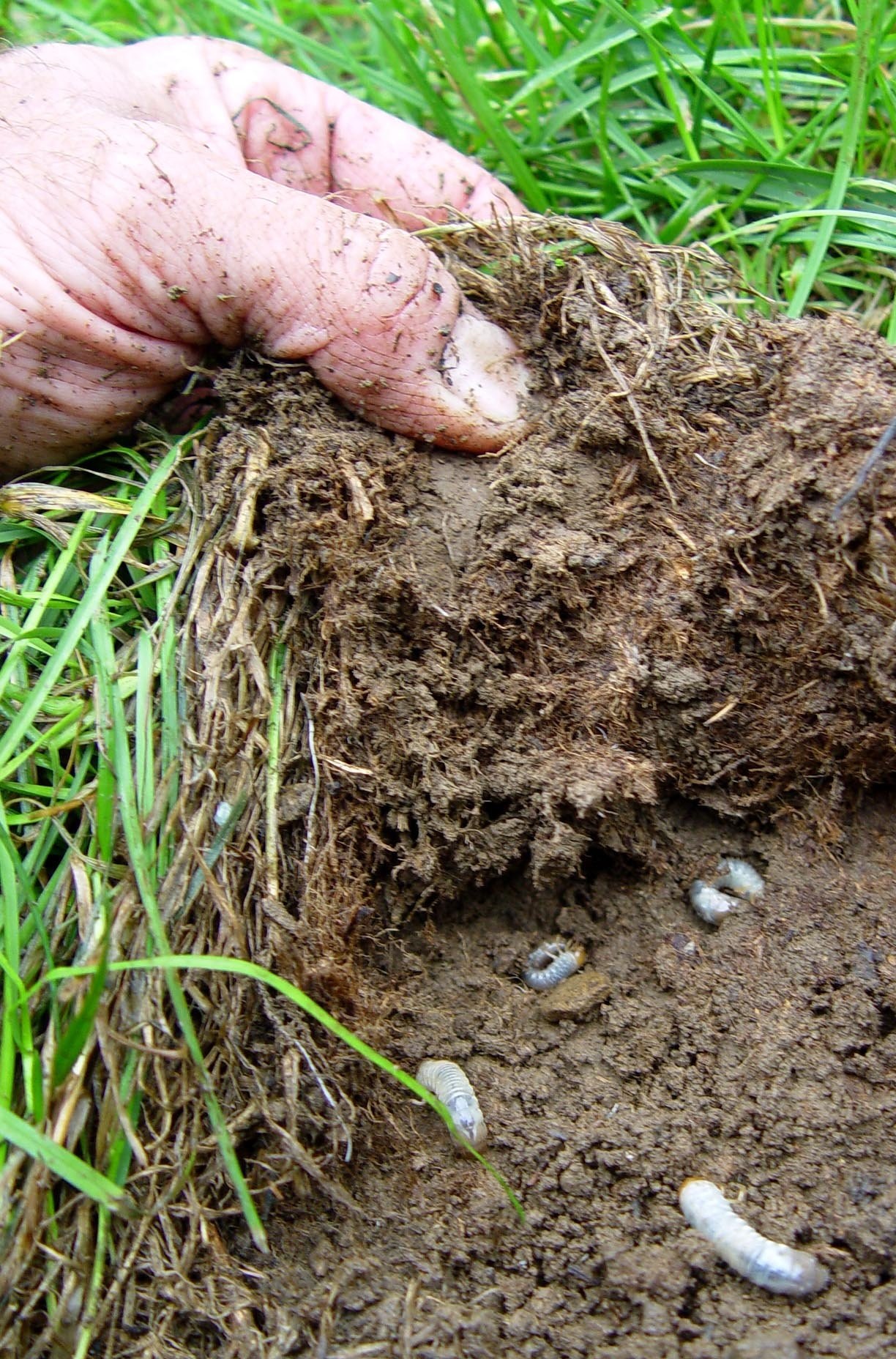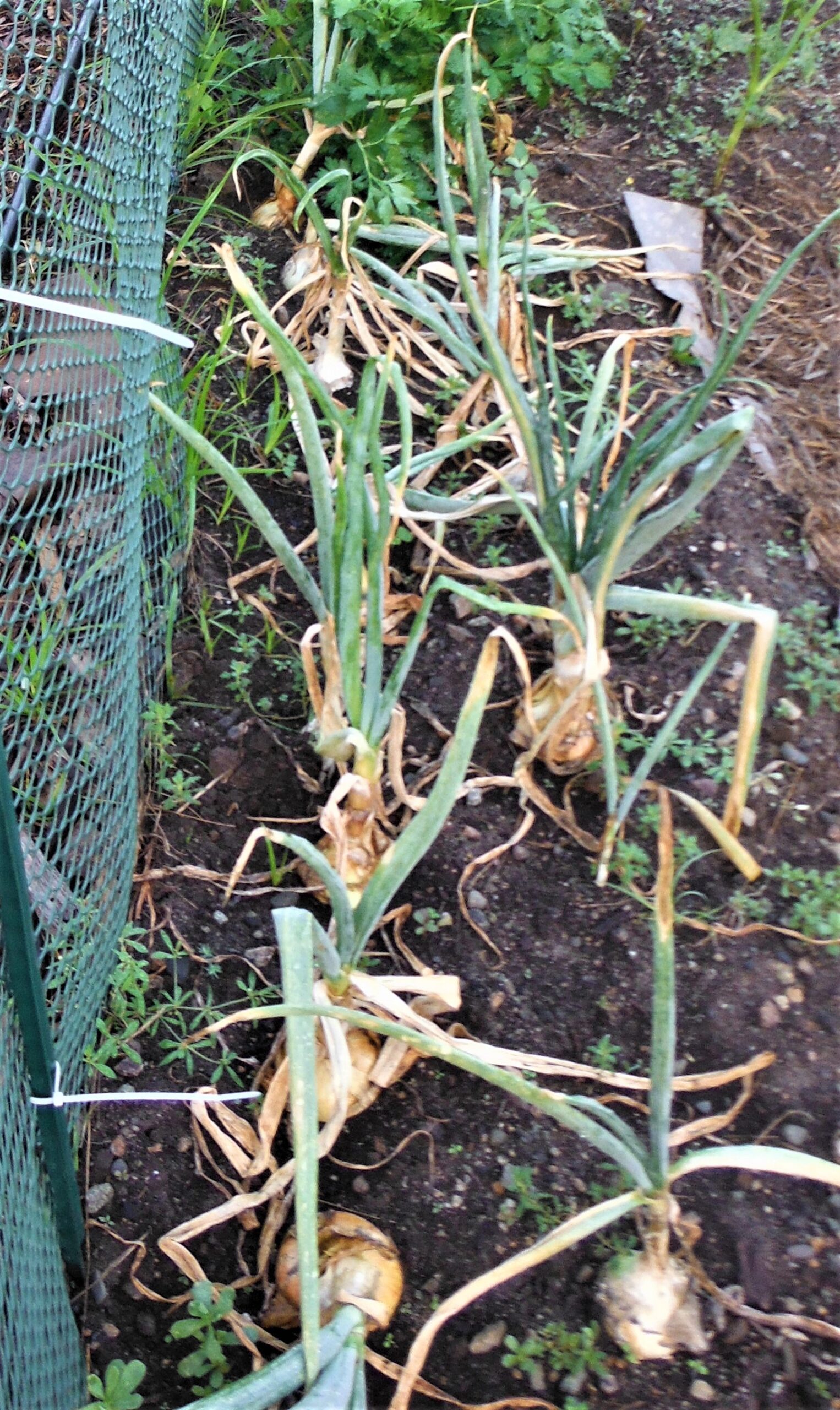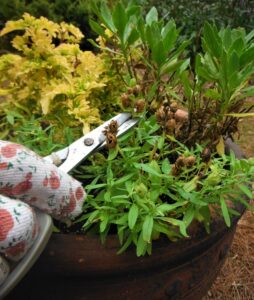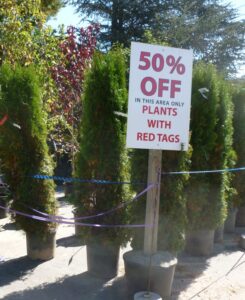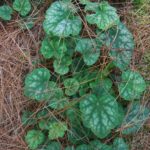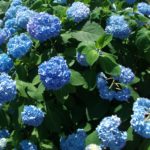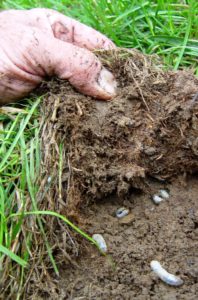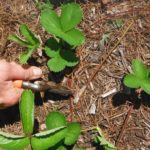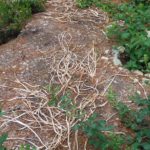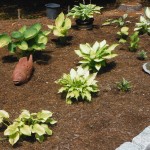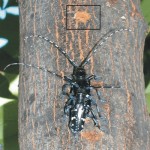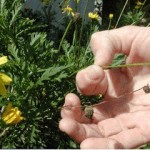Horticultural Hints – August
July’s bountiful rains were a gift for gardeners. Unfortunately, they were also a blessing for the grubs in your lawn. When the soil dries out and stays dried out for lengthy periods (as happened last year) grubs often die from lack of moisture. This year grubs are likely to be back. But before you begin treating your lawn with one of the chemicals sold for that purpose, be aware of what you are doing. Products that actually kill grubs are dangerous to you, your family, pets and every other living thing that walks across your lawn. Lawns can be reseeded and fertilized in the fall repairing any damage without danger to anyone.
Container gardens, Despite July’s generous rains, watering may be needed in containers where limited room and exposure to heat and sun from all sides mean they dry out quickly. Check containers by wiggling your finger down in until you reach the second knuckle looking for wet soil. If it is dry, water until it comes out of the bottom of the container. And never leave pots sitting in water-filled saucers as this can lead to root rot.
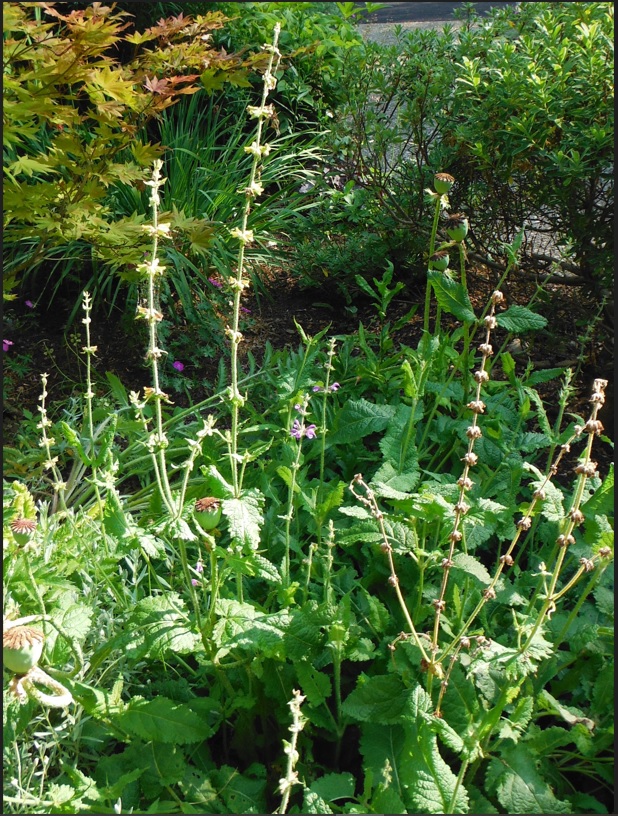
Cut off the spent flower heads on your gardens perennials early in August to get a late-season re-bloom.
Garden maintenance. Cut back perennials that have finished blooming. They’ll look neater and many will surprise you with a second bloom when prevented from setting seed the first time. Keep picking your vegetable gardens. By picking, you are preventing your plants from going to seed so they keep producing produce. If you have more vegetables than you can use, offer it to friends or call a local food cupboard and ask for their drop-off days. Replant this month for a more bountiful fall crop: green beans, peas, cucumbers, carrots, kohlrabi, summer squash, early sweet corn, green onions. Water seeded areas by hand daily until the new plants are up and a couple of inches tall. Cover the newly planted seeds with row cover to help keep them cooler and out of pecking range of birds. You can take the row covers off when the plants are several inches tall.
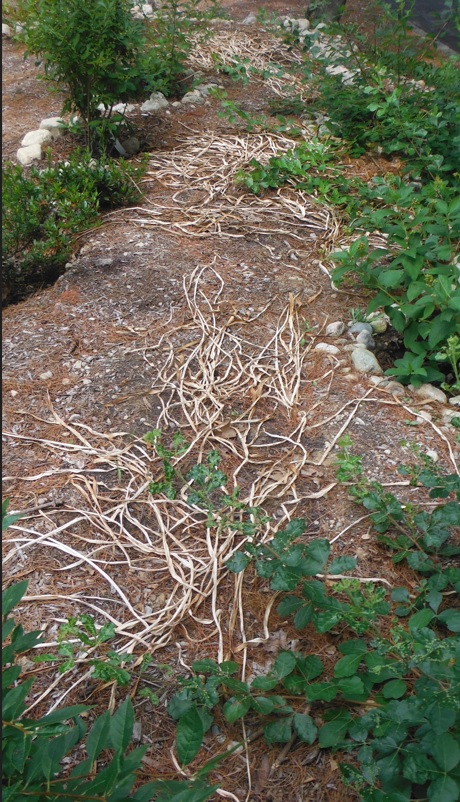 Spring bulbs. Any remaining foliage should be cut off and removed now. If you had areas that did not bloom well in the spring, the problem could be that the bulbs have divided and are now too crowded. Or if you weren’t happy with an area of your yard this year, dig the bulbs up carefully now, dry them in a garage or garden shed and replant them in the fall. If you’re thinking of adding bulbs for next spring, this is the month to order those new bulbs for fall planting. The selection only narrows as summer turn to fall.
Spring bulbs. Any remaining foliage should be cut off and removed now. If you had areas that did not bloom well in the spring, the problem could be that the bulbs have divided and are now too crowded. Or if you weren’t happy with an area of your yard this year, dig the bulbs up carefully now, dry them in a garage or garden shed and replant them in the fall. If you’re thinking of adding bulbs for next spring, this is the month to order those new bulbs for fall planting. The selection only narrows as summer turn to fall.
Strawberry plants will have sent out many runners (baby plants on a leash) by now. There are two ways to turn them into bearing plants next year. One, fill small pots with quality soil and put them down near the mother plant. Lift any plantlets, and using unbent paperclips, hold them in place in the pot. After the new plant has developed roots (try a gentle tug), cut it connection to its mother. Plant them in their new home by the end of the month to give them time root itself before winter.
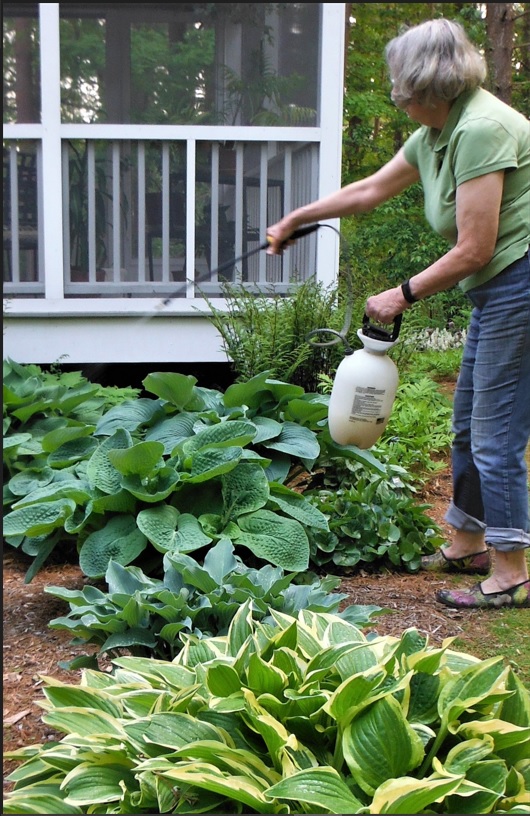 Houseplants. As you bring houseplants that spent the summer outdoors, it is a good time to consider repotting. Your plant almost certainly grew over the summer. And the roots almost certainly grew as much as the pot allowed. Getting a clean pot with fresh soil allows the plant to settle in for the winter without the salts that may have accumulated. Don’t be afraid to prune back any part of the plant that took advantage of the extra sunlight to stretch out—and now no longer fits its allotted space in the house.
Houseplants. As you bring houseplants that spent the summer outdoors, it is a good time to consider repotting. Your plant almost certainly grew over the summer. And the roots almost certainly grew as much as the pot allowed. Getting a clean pot with fresh soil allows the plant to settle in for the winter without the salts that may have accumulated. Don’t be afraid to prune back any part of the plant that took advantage of the extra sunlight to stretch out—and now no longer fits its allotted space in the house.
In the ornamental garden. Watch for insect and disease on annuals and perennials. Check on line for recommendations but also check with a good local nursery for recommendations, especially if this is a new problem for you. It’s in their interest to make a regular customer of you by helping you solve your gardening problems. Treat problems as soon as they appear and before they can spread.
Deer deterrent. In my yard the deer have decided they prefer certain garden plants to what they can find in the woods and fields. I spray monthly with a garlic and putrefied-egg-based deer repellent that discourages them from further dining.
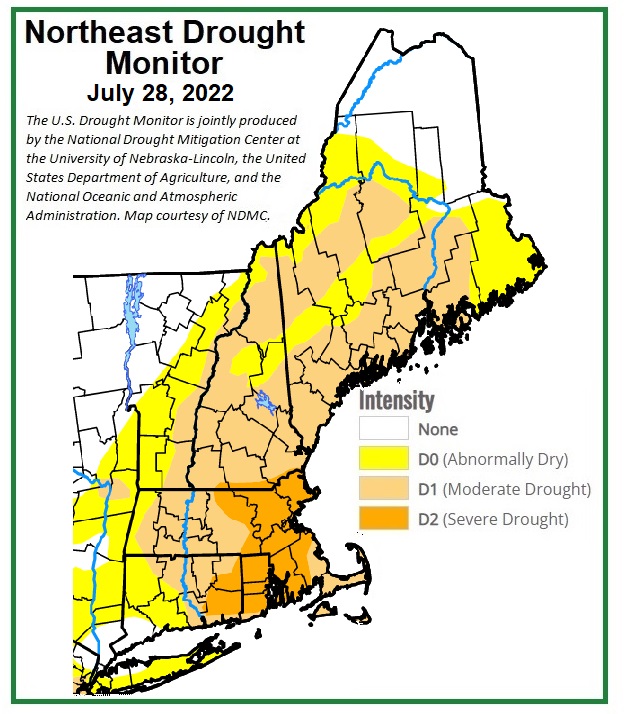 The drought is getting worse. It’s official now: it is dry, dry, dry. Much of New England is classified as being in a severe drought, with no relief in sight. What does a gardener do? First, respect watering bans. Towns are worried about having enough water for people –to drink, cook, shower and flush. Minimize your home water use any way you can. When you water outside, water early in the day when the air is coolest to lose the least to evaporation. Don’t water at night when water left on plant leaves can promote fungus diseases.
The drought is getting worse. It’s official now: it is dry, dry, dry. Much of New England is classified as being in a severe drought, with no relief in sight. What does a gardener do? First, respect watering bans. Towns are worried about having enough water for people –to drink, cook, shower and flush. Minimize your home water use any way you can. When you water outside, water early in the day when the air is coolest to lose the least to evaporation. Don’t water at night when water left on plant leaves can promote fungus diseases.
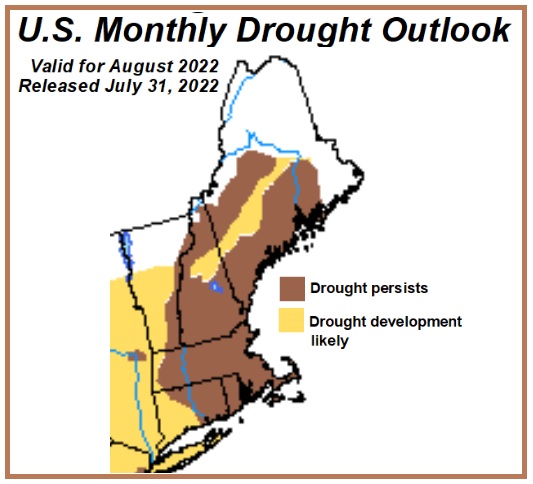 Prioritize your watering. Water your vegetable garden: it contains the annuals that are feeding you and your family so it should top your list. Most towns exempt vegetable gardens from watering bans so long as all watering is done by hand, If it is allowed, water new trees, shrubs and perennials. They lack an established root systems and need the water you can give them now. Now is not the time to fertilize your lawn, trees or shrubs. Fertilize in the fall if we get sufficient rain.
Prioritize your watering. Water your vegetable garden: it contains the annuals that are feeding you and your family so it should top your list. Most towns exempt vegetable gardens from watering bans so long as all watering is done by hand, If it is allowed, water new trees, shrubs and perennials. They lack an established root systems and need the water you can give them now. Now is not the time to fertilize your lawn, trees or shrubs. Fertilize in the fall if we get sufficient rain.
Begin harvesting herbs for drying on sunny days. Cut herbs in the morning after any dew has dried off for maximum freshness. Dry the herbs where they get good air circulation but out of direct sunlight. Place the dried leaves or seeds in sealed containers to maximize freshness.
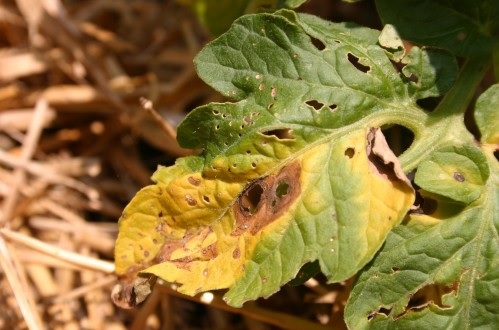 If you spot early or late blight on your tomatoes – characterized by leaves turning yellow with black spots – trim them off with pruners that you wipe frequently with sanitizing hand wipes or dip into a solution of alcohol in order not to spread it. Place all clippings in trash bags and send them to the dump. Diseased plant material should never be composted or left in the garden where it will winter over to attack your plants next year.
If you spot early or late blight on your tomatoes – characterized by leaves turning yellow with black spots – trim them off with pruners that you wipe frequently with sanitizing hand wipes or dip into a solution of alcohol in order not to spread it. Place all clippings in trash bags and send them to the dump. Diseased plant material should never be composted or left in the garden where it will winter over to attack your plants next year.
Remove spent flowers from perennials and annuals. Your goal is more flowers, not seeds. Keep the flowers coming by encouraging the plant to use its energy to set more buds. Keep your garden looking at its best by cutting back any plant that has finished flowering, leaving enough foliage to add energy to the roots but allowing space for the late bloomers to shine. If you are growing basil, keep pinching off flowers at the top of the plant. You want the leaves; the basil plant wants flowers. Once those flowers are pollinated, the plant considers its work done.
In the vegetable garden. Keep up with the harvest in the vegetable garden to keep plants producing. Few things can compare with fresh-picked corn or tomatoes still warm from the vine. Excess produce can be shared with friends, frozen or canned. Green peppers left on the plant will become red peppers but cucumber and green beans become overly large and inedible. Harvest tomatoes and corn as they ripen (does there anything say summer better than fresh tomatoes and sweet corn?) Watch for nasty bugs and diseases, but treat them organically – you’ll be eating the fruits of those plants! When onion tops go limp or begin to dry out, it’s time to pull your crop. As you pull spent vegetables, plant lettuce, spinach, arugula and other ‘leaf’ vegetables for a fall harvest. In mid-August, consider planting new rows of beets, lettuce and other greens, chard and radishes. These cool-weather vegetables will keep growing as the days shorten and the cool weather begins, giving you a fall harvest.
Too many vegetables? If your town has a food cupboard or a senior center that takes fresh food, contact them to see if they would like your overflow. Chances are, their response will be an enthusiastic ‘yes’.
The calendar may say August, but this is the time to order spring bulbs while supplies at their best. Check out catalogs from established producers such as Scheepers and Brent & Becky’s for high quality and great selection. If you wait until it’s time to plant (October), you will find a much reduced supply and many fewer varieties. Early bulbs, such as crocus, snowdrops (galanthus), rock garden iris, Glory of the Snow (chionodoxa), and striped squill (puschkinia) provide the first evidence that winter is breaking and spring is near. Pick out places in flower beds, then use golf tees or other unobtrusive markers so you can plant without disturbing the roots of sleeping perennials. And when you order, don’t forget to include paperwhites and amaryllis for indoor winter blooms.
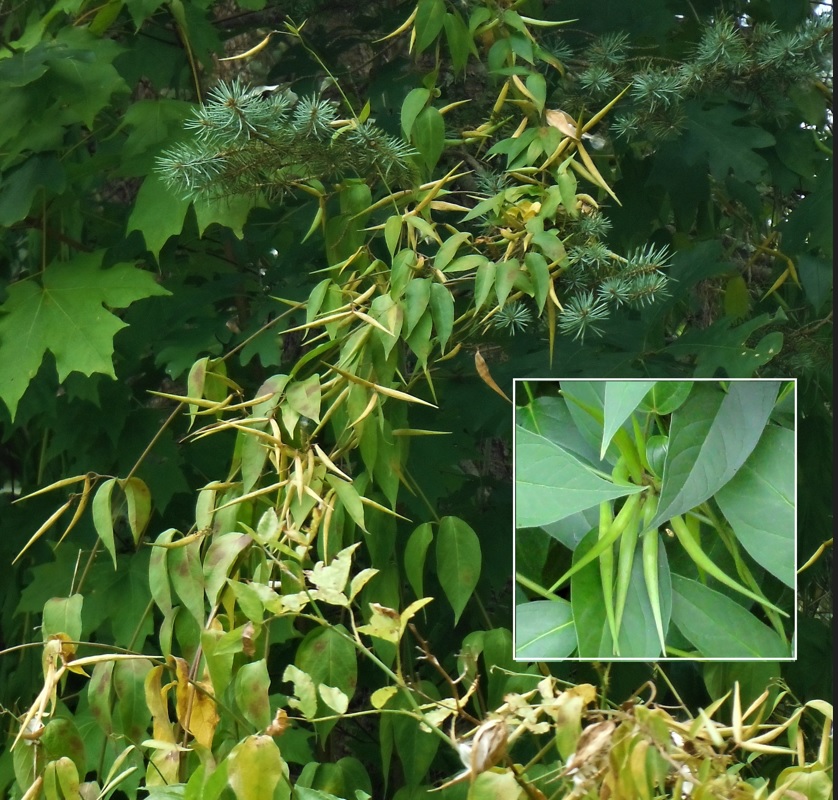 Save Our Monarchs. Some very nasty weeds are coming into seed at this time of year. Swallowwort is a relative of milkweed and often confuses monarchs looking to lay their eggs. While milkweed both feeds and acts as nursery for monarch butterflies, swallowwort is a death trap. Eggs laid on that plant will die shortly after hatching when they feed on the toxic leaves. If you see the plants in bloom (photo at left) or with seed pods, cut down and bag it and send it to the trash. Mark the spot and next year start early mowing or cutting it down as it emerges. If you keep at it, it will eventually die.
Save Our Monarchs. Some very nasty weeds are coming into seed at this time of year. Swallowwort is a relative of milkweed and often confuses monarchs looking to lay their eggs. While milkweed both feeds and acts as nursery for monarch butterflies, swallowwort is a death trap. Eggs laid on that plant will die shortly after hatching when they feed on the toxic leaves. If you see the plants in bloom (photo at left) or with seed pods, cut down and bag it and send it to the trash. Mark the spot and next year start early mowing or cutting it down as it emerges. If you keep at it, it will eventually die.
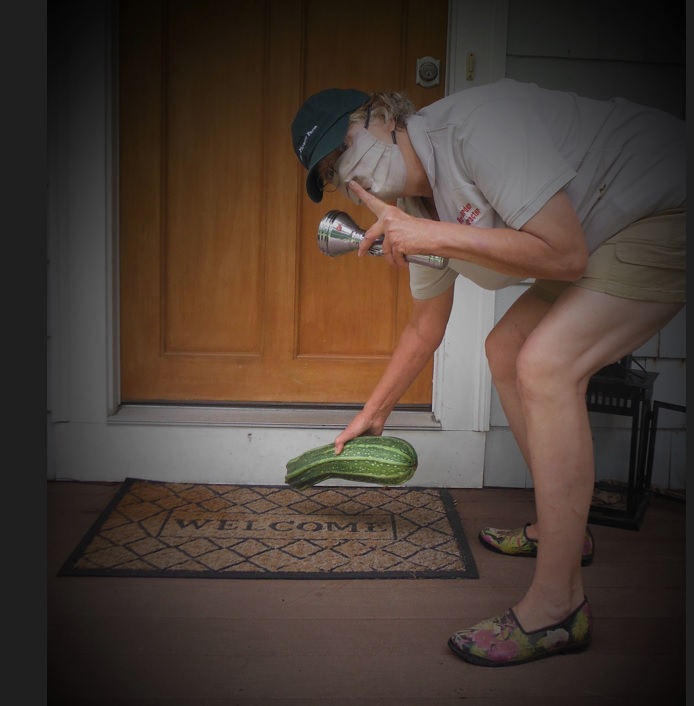 Keep weeding! Weeds allowed to set seed ensure that you will be working harder next year – pull them or dig them out and, because they may have seeds already, bag them and put them in the trash, not compost to insure they don’t get a second life.
Keep weeding! Weeds allowed to set seed ensure that you will be working harder next year – pull them or dig them out and, because they may have seeds already, bag them and put them in the trash, not compost to insure they don’t get a second life.
And don’t forget! Monday, August 8th is National Leave Zucchini on Your Neighbor’s Porch Night. If it isn’t already an annual tradition in your neighborhood, it ought to be. And, in these uncertain times, we all need something to smile about.
With August comes insects. Always treat insects with the least toxic methods available. Most insects you see do little or no damage to plants and can be left alone. Those seriously damaging plants can sometimes be removed with a hard spray from a hose which sends them to the ground where they become other bugs’ dinner. Others can be hand-picked; no one ever said gardening was easy!
Deadhead and prune annuals in containers
Container gardens need extra attention now. Keep deadheading annuals and don’t be afraid to cut back spreading plants such as petunias and verbena to get them back in scale with their container and promote new flowers. Stop adding fertilizer to any container with perennials or small shrubs which you plan to winter over. The perennials you wish to keep should be transplanted into the garden before the end of the month so they can establish roots to carry them through the winter and next spring.
Plan next spring’s garden. August is the month to order spring bulbs. You will have the best selection from any grower if you order now. Tulips, daffodils and other spring beauties don’t want to go into the ground until the soil temperature has dropped to 55 degrees and you are turning on your car heater in the morning. Look at photos you took this spring and judge where more bulbs are needed. When you plant, remember bulbs look best in groups, single bulbs spread out along a border or walkway have very little visual impact. If you sometimes have visits from deer and rabbits, daffodils and hyacinths are deer resistant, tulips are deer (and rabbit) candy.
Look for sales. If woody plants are on sale, shrubs like winterberry holly (Ilex verticillata) and red twig dogwood (Cornus stolonifera) add structure and color while trees such as paperbark maples show off beautiful bark in the winter landscape. Many garden centers have begun discounting plants, but there is still time for new trees and shrubs to settle in before the ground freezes.
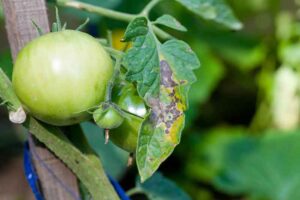 August is when fungal diseases become a nuisance. The downside of this summer’s humid weather is that you need to be extra vigilant in scouting out fungal diseases. These diseases spread rapidly; propelled from one leaf to another and from one plant to another by insects or during rain or watering. Whether you choose organic or inorganic methods of treating diseases, best results occur when you begin as soon as the problem appears and continue until you are certain it has been eliminated or you have disposed of the plant. If a plant can’t be saved, cut it, bag it and put it in the trash. But, don’t compost it (the disease may survive the process) or throw it into the woods. And, don’t spread the disease – clean your clippers with a disinfectant wipe before using them again.
August is when fungal diseases become a nuisance. The downside of this summer’s humid weather is that you need to be extra vigilant in scouting out fungal diseases. These diseases spread rapidly; propelled from one leaf to another and from one plant to another by insects or during rain or watering. Whether you choose organic or inorganic methods of treating diseases, best results occur when you begin as soon as the problem appears and continue until you are certain it has been eliminated or you have disposed of the plant. If a plant can’t be saved, cut it, bag it and put it in the trash. But, don’t compost it (the disease may survive the process) or throw it into the woods. And, don’t spread the disease – clean your clippers with a disinfectant wipe before using them again.
Planting trees and shrubs this month? Here’s how to do it properly. Start with its placement – will the new plant get the sunlight it needs? Or if it prefers shade, is there sufficient shade? Will it have to fight with other trees’ roots for water? Will the family touch football game run into it? And as it grows, will it run afoul of overhead wires or anything else?
Dig hole at least twice as wide and as deep as the new plant’s root ball. Fill the hole with water and allow it to soak in.
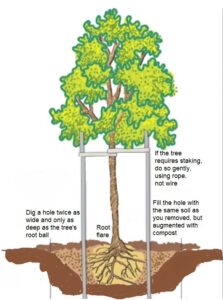 Loosen all the wrappings on the root ball and remove as many as possible without it falling apart. Gently spread out any roots that you can move off the root ball without breaking. Then begin placing new soil around it. Do not fill the hole with potting mix or bagged garden soil. Use the soil you dug out with compost mixed in to feed the new plant.
Loosen all the wrappings on the root ball and remove as many as possible without it falling apart. Gently spread out any roots that you can move off the root ball without breaking. Then begin placing new soil around it. Do not fill the hole with potting mix or bagged garden soil. Use the soil you dug out with compost mixed in to feed the new plant.
Firm the soil by tamping down with your hands—not by stomping on it or pounding it—you need the new tree or shrub to quickly grow roots into this area. When the hole is half full, water generously. Then wait for that water to be absorbed. Add more soil and water again. Finish with soil being added up to the level where the tree or shrub sat before being prepared for sale. GENTLY tamp (do not stomp!) the new soil around the tree. The tree/shrub needs air in the soil to provide oxygen to the roots and spaces water can flow through to get to the roots.
If you need to stake the tree, do it gently with ropes. (Shrubs generally do not need staking.) Soften contact with the trunk by pieces of old hose or wrapped cloths to keep it from being held too tightly against the tree trunk. Water regularly for the first weeks to keep the new planting area moist. If you are not certain how far the water is penetrating, use a trowel to dig down gently, about halfway to the root ball and check with your fingers. Do not forget to water after the weather cools if we have a dry autumn or early winter.
What’s with the pine needles? Does it seem as though an unusually large normal number of pine needles are falling on your property this summer? Global warming may be affecting our gardens and forests in yet another way. According to the UMASS Extension Service, the unusually frequent rainfall we received in May, June and July, along with the warmer temperatures, has given a boost to an existing pathogen that causes pines to shed needles early. Not only does the tree lose the food normally produced by the needles, it also robs the tree of nitrogen that it would have held onto over the winter. While there is currently no practical way for homeowners to attack the pathogen, you can help your trees by providing a light nitrogen feeding now, and again in the early spring. If you have a dense stand of pines on your property, consider thinning the trees to reduce the spread of the disease.
In the vegetable garden. When you have harvested your corn, pull up and chop the corn stalks. They should be put in your composter or buried in the garden where they will break down over the winter releasing their load of nutrients back into the soil.
Houseplants’ season in the sun. If you moved houseplants outside for the summer, start moving them into shadier areas now in preparation for the move indoors (where light levels are lower) in September. Before the final move, spray plants (and their soil) to eliminate any “guests” that might also like to winter indoors.
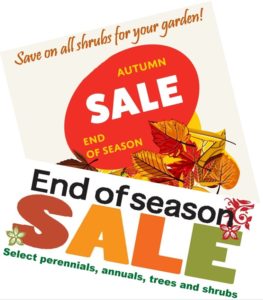 Sometimes a bargain isn’t one. In August, nurseries begin cutting the prices on their unsold stock. It can be a great time to add to your garden, but be cautious of late summer sales of woody plants. Particularly at ‘big box’ stores and discount houses, they may have been sitting in their small pots, suffering from the heat all summer long. They also will not have much time to replace the roots they are missing. Remember: a healthy tree is as large below the ground as it is above.
Sometimes a bargain isn’t one. In August, nurseries begin cutting the prices on their unsold stock. It can be a great time to add to your garden, but be cautious of late summer sales of woody plants. Particularly at ‘big box’ stores and discount houses, they may have been sitting in their small pots, suffering from the heat all summer long. They also will not have much time to replace the roots they are missing. Remember: a healthy tree is as large below the ground as it is above.
When is the right time to prune hydrangeas? It’s a great question, and the answer is simpler than you think. If your hydrangeas bloomed in June and are pretty much finished now, prune immediately. These plants are blooming on “old” wood — last year’s new branches. Cut the stems that had blooms down close to the ground. Leave others to continue to put food into the roots. New branches will begin growing quickly and will set buds before winter (which is why they may not bloom at all if we have a very hard winter).
Hydrangeas that do not bloom until August or later are blooming on this year’s new wood. Do not trim them back until late in the winter (March) because they will set their buds on the new wood next year—making them later, but more reliable bloomers after bad winters.
Oakleaf hydrangeas (our only native hydrangea) also blooms on old wood so cut them back as soon as blooming is finished, for most of us that is soon.
Finally, if you have “endless” blooming hydrangeas, deadhead throughout the summer, cutting the stem just a couple of inches below the spent flower For maximum flowers, do not prune the stems back to the ground until has been growing in your garden for two or three years. At that time, the plant will benefit from new wood.
Tomatoes hate dry spells, but remember that too much water will lead to “cat cracking” in ripening fruit. Once the tomato starts to color, it can no longer grow larger and the skin breaks open. The damage is only cosmetic and the fruit is completely edible.
Heavy rains in mid-summer are usually thought of as a gift for gardeners. Unfortunately, they were also a blessing for the grubs in your lawn. When the soil dries out and stays dried out for lengthy periods (as happened last year) grubs often die from lack of moisture. This year grubs are likely to be back. But before you begin treating your lawn with one of the chemicals sold for that purpose, be aware of what you are doing. Products that actually kill grubs are dangerous to you, your family, pets and every other living thing that walks across your lawn. Lawns can be reseeded and fertilized in the fall repairing any damage without danger to anyone.
Strawberry plants will have sent out many runners (baby plants on a leash) by now. There are two ways to turn them into bearing plants next year. One, fill small pots with a mixture of sand and soil and put them down near the mother plant. Lift any plantlets, and using unbent paperclips, hold them in place in the pot. After the new plant has developed roots (try a gentle tug), cut it connection to its mother. Plant them in their new home by the of the month to give it time ready itself for winter.
If you don’t insist of a neat bed, allow the new plantlets to root themselves wherever there is room in your garden and watch your harvest multiply next year.
Spring bulbs. Any remaining foliage should be cut off and removed now. If you had areas that did not bloom well in the spring, the problem could be that the bulbs divided and are now too crowded. Or if you weren’t happy with an area of your yard this year, dig the bulbs up carefully now, dry them in a garage or garden shed and replant them in the fall. If you’re thinking of adding bulbs for next spring, this is the month to order those new bulbs for fall planting. The selection only narrows as summer turn to fall.
Lawn renovation. Late August is prime time in New England for restoring lawns. As the days get shorter and cooler, lawn seeds germinate happily while most weeds won’t, with the result you get grass and not the new crop of weeds that accompany spring seedings. Buy quality seed; cheap seed may be an annual grass that dies in the winter, full of weed seeds, or even a grass that does not perform well in New England. Spend a little time on the Internet or go to your local nursery (not big box store) to look at the new varieties of seeds that need less water to thrive, are more resistant to disease, and need less frequent mowings. Those three benefits will make an ‘expensive’ seed cheaper in the long run.
This is the Asian longhorn beetle. The characteristic holes it leaves in host trees are highlighted at the top of the photo. If you see it, report it.The bad news. Despite a nasty winter that many of us have tried to forget, the populations of destructive (and dangerous) insects seem to have not been affected. Biting flies, hornets, wasps, mosquitoes and ticks are making every trip out into the yard miserable for humans and some of our pets. Our gardens are fighting off slugs, snails, lily leaf beetles, Japanese beetles and aphids of every color. In the vegetable garden there are Colorado potato beetles, Mexican bean beetles, corn borers, squash borers, cucumber beetles and cabbage worms, most of whose appetites stray far beyond the plant whose name they share. Mildew is showing up on phlox and squash, black spot is on the roses, and early and late blight on the tomatoes. August is the time for Asian longhorned beetles to come crawling out of the trees, check maples, birches, elms, and willows for exit holes (see photo) In the Berkshires, the emerald ash borer has made its appearance.
In the ornamental garden. Watch for insect and disease on annuals and perennials. In my yard the deer have decided they prefer certain garden plants to what they can find in the woods and fields. I spray monthly with a garlic and putrefied-egg-based deer repellent that discourages them from further forays.
In the Flower Garden. Do not cut back woody plants (such as roses or hydrangeas) now. Begin clean-up of gardens as annuals and perennials pass. Improve the garden soil by adding compost, aged manure or shredded leaves to any empty areas.
Stop fertilizing roses to prevent additional growth which will not have time to harden off.
Take cuttings from coleus, geraniums and begonias to grow indoors over the winter.
If the heat and humidity bring on a plague of mildew, a spray of one tablespoon of baking soda in one gallon of water works on roses and many perennials.
Remember to clean up debris from any plant that has finished producing. Whether it’s a bean plant with beetles or a corn stalk with borers, if it was affected by insects or disease, remove it from the garden, bag it and send it to the trash. Insects lurk where you least expect them—corn borers happily winter over, even in stalks that have been chopped up. You don’t want to give those pests a head start for next year.
